208108-76-3
| Name | 4-phenyl-5-(trifluoromethyl)thiophene-2-carboxylic acid |
|---|---|
| Synonyms |
2-Thiophenecarboxylic acid, 4-phenyl-5-(trifluoromethyl)-
5-trifluoromethyl-4-phenyl-thiophene-2-carboxylic acid HMS1449K04 4-Phenyl-5-(trifluoromethyl)-2-thiophenecarboxylic acid |
| Density | 1.4±0.1 g/cm3 |
|---|---|
| Boiling Point | 366.5±42.0 °C at 760 mmHg |
| Melting Point | 130ºC |
| Molecular Formula | C12H7F3O2S |
| Molecular Weight | 272.243 |
| Flash Point | 175.5±27.9 °C |
| Exact Mass | 272.011871 |
| PSA | 65.54000 |
| LogP | 5.37 |
| Vapour Pressure | 0.0±0.9 mmHg at 25°C |
| Index of Refraction | 1.556 |
Synonym:none know Section 2 - COMPOSITION, INFORMATION ON INGREDIENTS
Risk Phrases: 22 36/37/38 Section 3 - HAZARDS IDENTIFICATION EMERGENCY OVERVIEW
Harmful if swallowed. Irritating to eyes, respiratory system and skin. Potential Health Effects Eye: Causes eye irritation. Skin: Causes skin irritation. Ingestion: Harmful if swallowed. May cause irritation of the digestive tract. Inhalation: Causes respiratory tract irritation. Chronic: No information found. Section 4 - FIRST AID MEASURES Eyes: Flush eyes with plenty of water for at least 15 minutes, occasionally lifting the upper and lower eyelids. Get medical aid. Skin: Get medical aid. Flush skin with plenty of water for at least 15 minutes while removing contaminated clothing and shoes. Ingestion: Get medical aid. Do NOT induce vomiting. If conscious and alert, rinse mouth and drink 2-4 cupfuls of milk or water. Inhalation: Remove from exposure and move to fresh air immediately. If not breathing, give artificial respiration. If breathing is difficult, give oxygen. Get medical aid. Notes to Physician: Section 5 - FIRE FIGHTING MEASURES General Information: As in any fire, wear a self-contained breathing apparatus in pressure-demand, MSHA/NIOSH (approved or equivalent), and full protective gear. Extinguishing Media: Use water spray, dry chemical, carbon dioxide, or chemical foam. Section 6 - ACCIDENTAL RELEASE MEASURES General Information: Use proper personal protective equipment as indicated in Section 8. Spills/Leaks: Vacuum or sweep up material and place into a suitable disposal container. Avoid generating dusty conditions. Section 7 - HANDLING and STORAGE Handling: Use with adequate ventilation. Minimize dust generation and accumulation. Avoid breathing dust, vapor, mist, or gas. Avoid contact with skin and eyes. Storage: Store in a cool, dry place. Store in a tightly closed container. Section 8 - EXPOSURE CONTROLS, PERSONAL PROTECTION Engineering Controls: Facilities storing or utilizing this material should be equipped with an eyewash facility and a safety shower. Use adequate ventilation to keep airborne concentrations low. Exposure Limits CAS# 208108-76-3: Personal Protective Equipment Eyes: Wear appropriate protective eyeglasses or chemical safety goggles as described by OSHA's eye and face protection regulations in 29 CFR 1910.133 or European Standard EN166. Skin: Wear appropriate protective gloves to prevent skin exposure. Clothing: Wear appropriate protective clothing to prevent skin exposure. Respirators: Follow the OSHA respirator regulations found in 29 CFR 1910.134 or European Standard EN 149. Use a NIOSH/MSHA or European Standard EN 149 approved respirator if exposure limits are exceeded or if irritation or other symptoms are experienced. Section 9 - PHYSICAL AND CHEMICAL PROPERTIES Physical State: Solid Color: Not available. Odor: Not available. pH: Not available. Vapor Pressure: Not available. Viscosity: Not available. Boiling Point: Not available. Freezing/Melting Point: 128 - 130 deg C Autoignition Temperature: Not available. Flash Point: Not available. Explosion Limits, lower: Not available. Explosion Limits, upper: Not available. Decomposition Temperature: Solubility in water: Specific Gravity/Density: Molecular Formula: C12H7F3O2S Molecular Weight: 272.25 Section 10 - STABILITY AND REACTIVITY Chemical Stability: Stable under normal temperatures and pressures. Conditions to Avoid: Incompatible materials. Incompatibilities with Other Materials: Strong oxidizing agents, strong bases, amines. Hazardous Decomposition Products: Carbon monoxide, oxides of sulfur, carbon dioxide, fluorine, hydrogen fluoride gas. Hazardous Polymerization: Has not been reported Section 11 - TOXICOLOGICAL INFORMATION RTECS#: CAS# 208108-76-3 unlisted. LD50/LC50: Not available. Carcinogenicity: 4-Phenyl-5-(trifluoromethyl)thiophene-2-carboxylic acid - Not listed by ACGIH, IARC, or NTP. Section 12 - ECOLOGICAL INFORMATION Section 13 - DISPOSAL CONSIDERATIONS Dispose of in a manner consistent with federal, state, and local regulations. Section 14 - TRANSPORT INFORMATION IATA Shipping Name: Not regulated. Hazard Class: UN Number: Packing Group: IMO Shipping Name: Not regulated. Hazard Class: UN Number: Packing Group: RID/ADR Shipping Name: Not regulated. Hazard Class: UN Number: Packing group: Section 15 - REGULATORY INFORMATION European/International Regulations European Labeling in Accordance with EC Directives Hazard Symbols: XN Risk Phrases: R 22 Harmful if swallowed. R 36/37/38 Irritating to eyes, respiratory system and skin. Safety Phrases: S 22 Do not breathe dust. S 26 In case of contact with eyes, rinse immediately with plenty of water and seek medical advice. S 36/37/39 Wear suitable protective clothing, gloves and eye/face protection. WGK (Water Danger/Protection) CAS# 208108-76-3: No information available. Canada None of the chemicals in this product are listed on the DSL/NDSL list. CAS# 208108-76-3 is not listed on Canada's Ingredient Disclosure List. US FEDERAL TSCA CAS# 208108-76-3 is not listed on the TSCA inventory. It is for research and development use only. SECTION 16 - ADDITIONAL INFORMATION N/A |
| Hazard Codes | Xi |
|---|---|
| HS Code | 2934999090 |
|
~94% 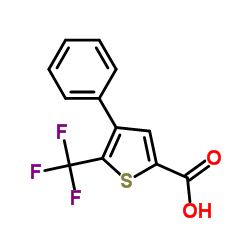
208108-76-3 |
| Literature: Hale, Jeffrey J.; Lynch, Christopher L.; Neway, William; Mills, Sander G.; Hajdu, Richard; Keohane, Carol Ann; Rosenbach, Mark J.; Milligan, James A.; Shei, Gan-Ju; Parent, Stephen A.; Chrebet, Gary; Bergstrom, James; Card, Deborah; Ferrer, Marc; Hodder, Peter; Strulovici, Berta; Rosen, Hugh; Mandala, Suzanne Journal of Medicinal Chemistry, 2004 , vol. 47, # 27 p. 6662 - 6665 |
|
~% 
208108-76-3 |
| Literature: Journal of Medicinal Chemistry, , vol. 47, # 27 p. 6662 - 6665 |
|
~% 
208108-76-3 |
| Literature: Journal of Medicinal Chemistry, , vol. 47, # 27 p. 6662 - 6665 |
| Precursor 3 | |
|---|---|
| DownStream 4 | |
| HS Code | 2934999090 |
|---|---|
| Summary | 2934999090. other heterocyclic compounds. VAT:17.0%. Tax rebate rate:13.0%. . MFN tariff:6.5%. General tariff:20.0% |
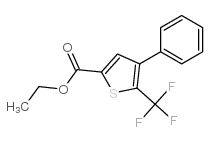
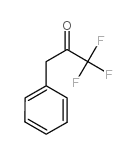

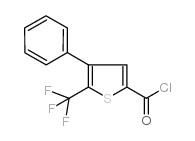
![1-[4-PHENYL-5-(TRIFLUOROMETHYL)-2-THIENYL]ETHAN-1-ONE structure](https://image.chemsrc.com/caspic/140/217184-77-5.png)
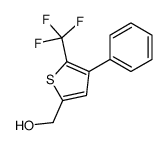
![4-[[4-phenyl-5-(trifluoromethyl)thiophen-2-yl]methoxy]benzaldehyde structure](https://image.chemsrc.com/caspic/016/569685-43-4.png)